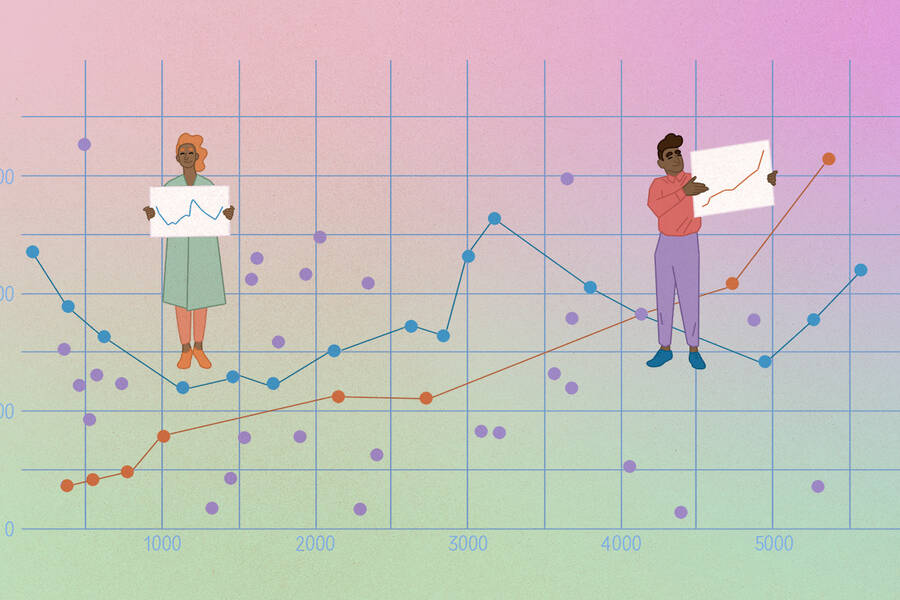Investors regularly turn to corporate balance sheets to find out. But generally accepted accounting principles (GAAP) lean conservative in their calculations—with good reason. “They’d rather put too low a value on something than too high a value,” explains Kellogg finance professor Robert Korajczyk.
In doing so, however, the default accounting standard for U.S.-based companies may be obscuring a useful measure of firms’ profitability, suggests a new paper, coauthored by Korajczyk, fellow Kellogg finance professor Ravi Jagannathan, and Kellogg post-doc Kai Wang.
Their research zeroes in on how company spending that creates intangible assets—like research and development (R&D), advertising, and employee-development programs—is categorized. Specifically, they explore whether that spending should be fully expensed when constructing earnings and profitability measures that are then used to identify which firms are most profitable, or whether the spending should instead be expensed over a longer time period because it represents an investment in the future.
There’s an asymmetry in the current GAAP standards, the researchers point out in the paper, noting that other analysts have said the same: “Investments in physical capital are capitalized and depreciated over time, while investments in intangible capital, which build intellectual property, brands, and organizational capital … are expensed immediately.”
For companies that spend heavily on future-focused initiatives like R&D in particular, the distinction has huge implications. Their reported profitability jumps considerably when intangibles are shunted from the “expenses” column to the “investments” column.
The distinction also matters to investors. In their paper, the researchers identify a new measure of profitability—and find that this measure does a better job of predicting a firm’s future operating profitability than traditional measures. They also find that it can be used to construct more-profitable portfolios.
A new profitability measure
First, the researchers set out to find a profitability measure that would take into account investments in intangible capital that could lead to future earnings growth.
They determined that the most helpful, consistent estimate of intangibles was the sum of R&D spending plus a portion of the spending reported on the Sales, General & Administrative Expenses (SG&A) line, which comprises spending on advertising, salaries, and much else.
The researchers found that this new intangible-adjusted profitability measure forecasts the future operating profitability and dividends of firms in the cross section better than the traditional profitability measures, especially at longer horizons.
“This is consistent with what you would expect,” says Jagannathan. “If you think about spending on R&D, it’s not going to pay off tomorrow; it takes some time.”
Then, drawing on corporate reports published between 1976 and 2021, Korajczyk, Jagannathan, and Wang constructed two portfolios, one based on ranking firms according to the traditional measure of profitability, and a second based on ranking firms using the new profitability measure. Both portfolios involve taking a long position in stocks of high-profitability firms and a short position in stocks of low-profitability firms.
Researchers found that the second portfolio significantly outperformed the first, especially in periods when the stock market was down.
“It’s a little bit better than investing in the market when the market’s up; it’s a lot better than investing in the market when the market is down,” says Korajczyk.
The researchers conjecture that the intangible-adjusted profitability measure is a better measure of firm quality—something that matters lot more when the market is suffering. This, says Korajczyk, makes the finding consistent with Warren Buffett’s famous quote: “Only when the tide goes out do you discover who’s been swimming naked.”
From insight to large-scale portfolio creation
Jagannathan acknowledges that plenty of investors and analysts, especially those with a focus on fundamental analysis, have considered different ways of calculating corporate profitability, including by treating expenditures that create intangibles as investments that generate benefits in the future.
“Fundamental investors have been aware of this,” Jagannathan says. “But that insight hasn’t translated into the quantitative space, to construct portfolios of a large number of stocks”—until recently.
What’s more, the research also sheds light on a few unexplained stock-market phenomena, often referred to as “asset-pricing anomalies.”
The most well-known of these anomalies is momentum, where a stock that has recently outperformed the market continues to gain speed. In the portfolios created with the new measure of profitability, any benefit of a momentum-focused strategy disappeared.
Jagannathan and Korajczyk believe this may be because their adjusted definition of profitability helps explain why some companies experience this seemingly mysterious lift in the market: they’ve been investing in the future, and eventually, the future arrives.




